Kenneth L. Gentry Jr.'s Blog, page 17
March 25, 2024
COMMENTARY PRE-PUBLICATION SPECIAL
March 25, 2024
This fully orthodox preterist commentary is scheduled to be completed printing by April 15, 2024. I am hoping to have it in hand sometime between April 30 and May 10, 2024. Please note: Due to shipping and logistical issues there could be a slight delay on my receiving it for distribution.
To get pre-publication special for the two-volume set, click HERE.
If you order before April 15 I will sign your copy (if you would like for me to do so and if you specifically request it). Then I will send it to you as soon as I receive my shipment.
Thanks for your interest. And patience. And prayers! Keep them going.
Ken Gentry

March 22, 2024
SODOM AND GOMORRAH
 PMW 2024-023 by Kenneth L. Gentry, Jr.
PMW 2024-023 by Kenneth L. Gentry, Jr.
In this posting I will present a running overview of Genesis 19 relative to the sin and judgment of Sodom and Gomorrah.
Gen. 19:1a
the two angels
In Genesis 18:2 three men (i.e., angels) appeared to Abraham, one of them being the angel of the Lord, God himself (18:1, 13, 17). Two of them headed to Sodom (18:22), while the Lord departed from Abraham (18:33). Here in v. 1 the two angels come to investigate Sodom in anticipation of its destruction (v. 13; cp. 18:20–26).
Gen. 19:1b
Lot was sitting in the gate of Sodom
Peter declares three times that Lot is “righteous” (2 Pet. 2:7–8). Genesis only hints at this by noting that God would spare men for righteousness (18:22–33) then sparing Lot (v. 29). But Lot is a tragic example of a believer (declared righteous; cp. Genesis 15:6) who frequently fails: he chooses a land outside of the Promised Land based on its luxury even though the residents were “wicked exceedingly” (13:8–13); offers his daughters to the abusive Sodomites (vv. 5, 8); hesitates in leaving Sodom though directed by the angels (v. 16); and allows his daughters to get him drunk so as to commit incest (vv. 35–36). Peter tells us that he was oppressed and tormented by Sodom’s sensual conduct day by day, though he continued to live among them (2 Pet. 2:7–8). Christians must be concerned with their surroundings and avoid evil company (Psa. 1:1; 26:4–5; Prov. 4:14–15; 13:20; 1 Cor. 15:33). Lot lost his sons-in-law because of his remaining in an evil environment (19:14b).
Gen. 19:5
Bring them out that we may have relations
Here the word yada is translated “have relations.” This word literally means “to know” (Gen. 29:5; Exo. 1:8; Deut. 11:28; Jer. 17:9), but in many contexts speaks of intimate sexual knowledge or contact (Gen. 4:1, 17, 25; 24:16; 38:26; Num. 31:17–8, 35; 1 Sam. 1:19; Jdg. 21:12; Luke 1:34). Here it refers to the desire for homosexual relations, since men are seeking men (19:4–5).
 God’s Law Made Easy (by Ken Gentry)
God’s Law Made Easy (by Ken Gentry)
Summary for the case for the continuing relevance of God’s Law. A helpful summary of the argument from Greg L. Bahnsen’s Theonomy in Christian Ethics.
See more study materials at: www.KennethGentry.com
Gen. 19:5 (extended comments)
Historically, Jew and Christian alike have recognized Sodom’s pervasive sin (highlighted in chs. 18–19) as widespread homosexual conduct. But in the contemporary world of collapsing moral values, many “affirming” scholars, whole liberal denominations, and an increasing number of evangelical Christians have challenged this understanding.
These interpreters invariably point to Ezekiel’s reference to Sodom in his condemnation of Jerusalem. They argue there that Jerusalem’s population (Eze. 16:1–3) was inhospitable to Lot’s visitors, which the prophet links to Israel’s sin of refusing to “help the poor and needy”: “Behold, this was the guilt of your sister Sodom: she and her daughters had arrogance, abundant food and careless ease, but she did not help the poor and needy” (Eze. 16:49).
Yet, Ezekiel’s surrounding verses speak of “abominations” (Ezek. 16:2, 22, 43, 47, 50, 51, 58), a designation too severe for inhospitality and neglecting the poor (cp. Lev. 18:22; Deut. 22:5). It also employs other sex-based terms in rebuking Jerusalem, such as referring to her “harlotries” (Eze. 16:15–17, 2, 22, 25–31, 33–36, 41), “adultery” (Eze. 16:32, 38), “nakedness” (Eze. 16:7, 8, 22, 36, 37, 39), and “lewdness” (Eze. 16:27, 36, 43, 58).
Why would the sin of inhospitality lead God to execute “capital punishment” against Sodom (Gen. 18:20–32; 19:13, 24, 25, 29; Deut. 29:23; Isa. 13:19; Jer. 49:18; 50:40; Lam. 4:6; Amos 4:11; Zeph. 2:9; Matt. 10:15; 11:24; 2 Pet. 2:6; Jude 7)? After all, homosexual conduct is a capital crime in God’s law, as recorded by Moses, the author of Genesis (Lev. 20:13).
Furthermore, the historical context stands against this inhospitality interpretation. We must recognize that twice before the episode in Genesis 19, the men of Sodom were already denounced as “wicked exceedingly and sinners” (13:13) or rejected because “their sin is exceedingly grave” (18:20).
Many who do admit the desire for homosexual relations in Genesis 19 insist that the men of Sodom were bent on homosexual rape, not consensual homosexual relations. They see their actions as a desire to humiliate these foreigners through this means of sexual dominance. But this does not explain the situation either. Why would the men of Sodom request that Lot allow them to rape his visitors (19:5, 8b) whom he had welcomed into his home (19:2–3)?
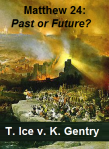 Great Tribulation: Past or Future?
Great Tribulation: Past or Future?
(Thomas Ice v. Ken Gentry)
Debate book on the nature and timing of the great tribulation. Both sides thoroughly cover the evidence they deem necessary, then interact with each other.
See more study materials at: www.KennethGentry.com
Rather, Sodom is so overrun by homosexuality that these citizens expected Lot’s visitors to have sexual relations with them. Sodom’s sin was widespread homosexual conduct (19:4), seeking “strange flesh” (Jude 7). Initially they were not asking to rape the two men, for rape passages always speak of coercion (e.g., Jdg. 19:25) or use different words than the Hebrew yada, which is used here (Gen. 34:2; 2 Sam. 13:14; Deut. 22:25). Though eventually when rebuffed the Sodomites do threaten rape (v. 9).
In God’s law homosexuality is not a civil right, but an abomination (Lev. 18:22; 20:13). The New Testament re-states the criminal prohibition of homosexuality in God’s law (1 Tim. 1:8–11). It also warns that tolerance of homosexual conduct is not evidence of social freedom, but is a sign of God’s judgment on a God-denying culture (Rom. 1:24, 26–28). This is because it is contrary to God’s creational design.
Nevertheless, the Christian worldview presents the reality of God and his sovereign, saving grace. Thus, the New Testament also points out that homosexuals can be healed, just as can habitual fornicators and adulterers (1 Cor. 6:9–11). God’s word promises that “though your sins are as scarlet, / they will be as white as snow” (Isa. 1:18; cp. Psa. 51:7; Isa. 43:25).
Gen. 19:13
the LORD has sent us to destroy it
Both the moral depth and cultural pervasiveness of Sodom’s sexual perversion lead God to destroy it. As a result it becomes a terrifying example of his righteous wrath (Deut. 29:23; 32:32; Isa. 1:9–10; 3:9; 13:19; Jer. 49:18; 50:40; Lam. 4:6; Amos 4:11; Matt. 10:15; 11:23; etc.). Sodom was a debased culture like Canaan, deserving God’s judgment (Lev. 18:3, 24–25). God will not tolerate evil indefinitely (Gen. 6:3; Rom. 2:5; 3:25; 1 Pet. 3:20; 2 Pet. 3:9).
Gen. 19:15
take your wife and your two daughters
Once again in Scripture (cp. 6:18; 7:1) God includes the family of his people in his promise. Nevertheless, covenantal inclusion requires obedience (cf. vv. 19b, 26).
Gen. 19:16
but he hesitated
Though warned by angels (v. 15), Lot hesitated to leave Sodom. This was his home for many years (13:12) where he had wealth (13:5–6) that would have to be left behind as he fled (v. 17). Lot chose to remain in a debased culture though it tormented him (2 Pet. 2:7–8) and resulted in much grief. God’s people should seek God’s will rather than the things of the world (John 12:25; 2 Tim. 4:10; 1 John 2:6). Too much wealth in the world today had dulled the church’s spiritual sensitivity.
 The Beast of Revelation (246pp); Before Jerusalem Fell: Dating the Book of Revelation (409pp); Navigating the Book of Revelation: Special Studies on Important Issues (211pp).
The Beast of Revelation (246pp); Before Jerusalem Fell: Dating the Book of Revelation (409pp); Navigating the Book of Revelation: Special Studies on Important Issues (211pp).
In the Logos edition, these volumes by Ken Gentry are enhanced by amazing functionality. Important terms link to dictionaries, encyclopedias, and a wealth of other resources in your digital library. Perform powerful searches to find exactly what you’re looking for. Take the discussion with you using tablet and mobile apps. With Logos Bible Software, the most efficient and comprehensive research tools are in one place, so you get the most out of your study.
For more study materials, go to: KennethGentry.com
Gen. 19:24
the LORD rained … brimstone and fire
Whatever secondary causes God may have used (sulfuric emission or volcanic eruption?), the primary cause of Sodom’s destruction is God’s righteous wrath. Twice God’s covenant name (“LORD”) is used in this one verse, and the destruction happens when and where God’s angels state that it would (vv. 14–15, 22) while unexpected by men (v. 14; Luke 17:28–29).
Gen. 19:26
she became a pillar of salt
Once again in Genesis the importance of obeying God’s commands is emphasized (e.g., 2:17). Lot’s wife disobeyed God’s word (v. 17) leading to her destruction.
Gen. 19:29
God remembered Abraham
In Genesis 18:20 when Abraham learns that God will soon destroy Sodom and Gomorrah, he prayerfully intercedes for any righteous people in the city (18:23). Here in Genesis 19:29 we see that Lot was spared because of Abraham’s prayer. The biblical worldview encourages believing prayer in times of need (Mark 11:24; Phil. 4:6-7; Jms. 5:16–18), indeed, at all times (Luke 18:1).
Gen. 19:32
that we may preserve our family
Here the desire to maintain family lineage tempts Lot’s daughters sinfully to take matters into their own hands (vv. 30–36). This reminds us of Sarah’s misguided plan to produce seed for Abraham through her servant Hagar, which causes great strife. As in Sarah’s case, so here this action leads later to much grief: the arising of the Moabites and Ammonites who will plague Israel (vv. 37–38; cp. Num. 25:1–5). Believers must be careful at all times to follow God’s revealed will, rather than their own ingenuity (Prov. 3:5–6; cp. Psa. 37:3–5; Jer. 9:23–24).

Nourishment from the Word
(by Ken Gentry)
Reformed studies covering baptism, creation, creeds, tongues, God’s law, apologetics, and Revelation
See more study materials at: www.KennethGentry.com
March 19, 2024
HELP WITH SURVEY?
Hey, readers:
I’ve been working on two or three new book projects – besides my Revelation commentary – that I’m looking forward to sharing with you later this year.
For at least one of them, I’m working with a publisher that’s fairly new on the scene. This small press is run by a man with 10+ years of experience as a book designer and producer. He’s overseen the design and production of many titles, including big ones by Rushdoony, Morecraft, Chilton, and North – handling typesetting, indexing, proofreading, cover design, and more. He knows how to do this.
As we’re looking to determine what this publishing partnership looks like, the most helpful thing at this stage is to know exactly what you, dear reader, want.
Do you want to my forthcoming books to be published in sewn hardcover? Do you want an audiobook version?
You tell me!
We’ve put together a short survey with some questions that will give us a lot of insight into how we should proceed. If you have a minute to spare, would you fill it out for me?
It won’t take you long, but your answers will be so helpful to me in knowing how we should move forward. The more details you can give about you, your reading habits, and what you’re looking for, the better.
In case the link above doesn’t work, copy and paste this into your browser: https://forms.gle/sXMTWVoYws22Srvx6
Thank you!
Blessings!
Ken
POSTMILLENNIALISM & PSALM 2
PMW 2024-022 by Kenneth L. Gentry, Jr.

Psalm 2 is an important Psalm undergirding the postmillennial hope. In this article I will provide a simple survey of this glorious psalm, highlighting several of its key features.
Psa. 2:1–12
This is a royal psalm, wherein David (Acts 4:25) recalls his enthronement. It is also a Messianic Psalm, which skillfully weaves together David’s human kingship with Jesus’s divine (Messianic) kingship. As such it is a counterpart to Psalm 110. It is frequently cited in the New Testament (see esp. Acts 4:25–27; cp. Matt. 3:17; 17:5; Acts 13:33; Rom. 1:4; Heb. 1:5; etc.). David the king and Jesus the Messiah are related both biologically and theologically (Matt. 1:1; 22:41–46; Rom. 1:4): David is a type of Christ . Though the psalm opens with turmoil (vv. 1–3) it promises the universal dominion of God’s Son (vv. 7–9), then ends with a gracious invitation for kings to submit to God’s rule (vv. 10a, 11, 12a) — or be destroyed (vv. 10b, 12b).
Psa. 2:1
Why are the nations in an uproar
Evidently David writes this psalm during some crisis in his kingdom (perhaps 2 Sam. 10?). Knowing that God’s covenant promises his kingdom’s permanent establishment (2 Sam. 7:8–16), David is astonished that the nations would bother to rebel against his rule. Thus, the very opening of the psalm sounds a note of confidence regarding the “vain” attempt to overthrow his rule (vv. 2–3). The word translated “devising” is the same word translated “meditate” in Psalm 1:2. While the righteous meditate on God’s word for directives for righteous living, the wicked meditate on vain actions doomed to catastrophic failure.
Dispensational Distortions
Three Lectures by Kenneth Gentry. Reformed introduction to classic dispensationalism, with analysis of leading flaws regarding the Church, kingdom, redemptive history, and Christ. Helpful for demonstrating errors to dispensationalists.
See more study materials at: www.KennethGentry.com
Psa. 2:2a
The kings of the earth take their stand
Though this undoubtedly reflects some current crisis under David’s rule, the New Testament recognizes its deeper significance. When Peter and John were warned by the Jewish authorities not to speak about Jesus in Jerusalem, they responded by referencing this psalm to show that opposition to Christ is “futile.” They apply this psalm to Herod and Pontius Pilate’s roles in crucifying Christ and in persecuting his followers (Acts 4:25–28). The apostles (Peter and John, Acts 4:19) are confident as the march of the Christian faith throughout the world begins (Matt. 28:18; Acts 1:8; cf. John 3:17; 12:32).
Psa. 2:2b
Against the LORD and … His Anointed
The nations’s attempt to overthrow David’s rule is “vain” (v. 1), i.e., empty or worthless. This is because they align themselves not only against the Lord’s Anointed, but the Lord God himself. The Hebrew word for “Anointed” is mashiach, the word from which we derive “Messiah.” The Greek translation of the Hebrew word is christos (“Christ”). The prophets spoke of a coming Davidic king (Isa. 9:2–7; Jer. 23:5–6; 33:14–16; Eze. 34:23–24; Hos. 3:5) who would rule the nations in righteousness (Isa. 2:2–4; 11:10; Mic. 4:1–5).
Psa. 2:4–5
He who sits in the heavens laughs
Despite the raging of the nations, the Lord scornfully mocks the opposition to his rule (cf. v. 2). The psalmist turns his attention from the earthly sphere (vv. 1–3) to the heavenly realm as he declares his confidence in God’s rule. Believers must always factor God into their daily lives and concerns (Matt. 10:28; John 14:1, 27; Rom. 8:28).
Psa. 2:6a
I have installed My King
In the Hebrew, the “I” is emphatic as God counters the bombast of the kings of the earth (vv. 1–3). As with Israel of old, we must recognize that the outcome of all issues is up to God alone (Psa. 75:6–7; Dan. 2:21; 4:17).
Psa. 2:6b
Upon Zion
“Zion” is the name of a hill in Jerusalem, the city of David (Neh. 3:15; Luke 2:4, 11). It was the location of the fortress David captured from the Jebusites (2 Sam. 5:6–7; 1 Chron. 11:4–9). The name “Zion” applies to this stronghold in Jerusalem (Isa. 40:9; Mic. 3:12). God chose it as his dwelling place (Psa. 132:13).

Four Views on the Book of Revelation (ed. by Marvin Pate)
Helpful presentation of four approaches to Revelation. Ken Gentry writes the chapter on the preterist approach to Revelation, which provides a 50 page survey of Revelation .
See more study materials at: www.KennethGentry.com
Psa. 2:7–9
I will surely tell of the decree of the LORD
These verses highlight the Davidic Covenant (2 Sam. 7:8–16), which promises that his descendant’s rule will be forever. The rule is not only everlasting, but here is even declared to extend to all “the nations” and to the “ends of the earth” (v. 8; cp. Psa. 67:7). This ultimately speaks of the kingdom of David’s greater son, Jesus Christ (Luke 1:32–33; Acts 2:25–36). This will be fulfilled by means of Christ’s Great Commission (Matt. 28:18–20; cp. Acts 1:8). Christ’s kingdom is divinely-ordained to conquer the world in righteousness (Isa. 2:2–4; 9:6–7; 11:1–16; cp. Psa. 22:27; 72:8–11; John 3:17; 12:32). This hope was already embedded in the patriarchal promises (Gen. 22:17–18; 26:4; 28:14) and is confirmed by Jesus (John 3:17; 12:31–32). Believers must always trust in Christ’s victory in time and on earth.
Psa. 2:7
You are My Son
This statement by the Lord in heaven (vv. 4, 6) declares the king to be his divine Son. David is such typologically (2 Sam. 7:12–16); but Jesus is God’s Son personally (Heb. 1:5; Matt. 1:1). According to Paul, this adoption comes to full expression at Jesus’s resurrection (Acts 13:33; Rom. 1:4). However, earlier declarations at his baptism (Matt. 3:17) and transfiguration (Matt. 17:5) marked him out as God’s Son.
Psa. 2:9
You shall break them with a rod of iron
The Messiah will effectively rule over the nations (v. 8), even if he has to employ destructive force. This verse appears three times in Revelation, once concerning Christians as co-rulers with Christ (Rev. 2:26–27) and twice regarding Christ himself (Rev. 12:5; 19:15). In the LXX the Hebrew word for “break” is translated “shepherd” or “rule.” Christians have a calling to engage Christ’s rule among the nations (2 Cor. 10:3–5; Rev. 20:4–6).
Psa. 2:10–12
Now therefore, O kings
The psalmist now calls on the world’s kings and judges (v. 10) to “worship the Lord” (v. 11). Serving him with “fear” would represent wisdom on their part (Psa. 111:10; Prov. 9:10; 15:33). This is a gracious call, even though it holds out a terrifying warning of his potential wrath.
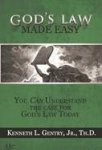
God’s Law Made Easy (by Ken Gentry)
Summary for the case for the continuing relevance of God’s Law. A helpful summary of the argument from Greg L. Bahnsen’s Theonomy in Christian Ethics.
See more study materials at: www.KennethGentry.com
March 15, 2024
EARTH OUR ETERNAL HOME
PMW 2024-021 by Kenneth L. Gentry, Jr.

As we have been witnessing in Internet discussions of late, hyperpreterism is inherently Gnostic in its basic outlook. They not only do away with our physical bodies by proposing a spiritual (i.e., immaterial) body at the resurrection (or at the point of death). But many of them also teach that even Christ’s own physically-resurrected body has dissipated and been replaced with a spiritual body. Along these lines I would like to speak to a related issue regarding our eternal destiny in the new heavens and new earth.
We need to understand that with God matter matters. God created the material universe. He created a material man to rule over the material earth. He sent his Son in a material body to save his people from their sins. He resurrected Christ in a material body. And we will be resurrected in material, re-constituted bodies. And we will do so in anticipating inhabiting a perfect, material new earth. Truly, matter matters in the biblical worldview. Despite the Gnostic elements in hyperpreterism.
From time-to-time I make the mistake of reading hyperpreterist literature. And on occasion someone will send me a quote from their musings. Often enough I see complaints directed against me that demonstrate they are not well read or theologically trained.
The matter about which I am speaking [1] at the moment is the frequent (and frustrating) complaint that “Gentry believes Christians will not live in heaven with Christ for eternity.” What they are complaining about is my fully orthodox, widely-held, biblical view that in the eternal, consummate order believers will live on the new earth in their resurrected bodies after the physical second coming of Christ and the final judgment. We certainly do go to heaven at death now, but in heaven we await the resurrection and final judgment before our final estates are fully entered into [2]. Despite hyperpreterists’ confusion, our dwelling on the new earth will not involve our being separated away from Christ. Of course, we do not know all the particulars, but we may rest assured that there will be direct communion between heaven and earth in eternity.
This eternal dwelling on the new earth is not “Gentry’s” idiosyncratic view. Hyperpreterists try to distract their followers by arguing as if certain things I teach are newly created by me and are therefore suspect. Simply because they are creating a new theology does not mean that their opponents are doing the same!
So, I picked a few Reformed and evangelical theologies off my shelves and looked up this issue. After a quick search, here are a few statements that I found affirming the view before us:
Robert L. Dabney, Lectures in Systematic Theology
“The doctrine that this earth is to be reconstructed after its purgation by fire, and is to become the dwelling place of redeemed men and the God-Man, in their resurrection bodies.” (pp. 850-51). This is taught partly by “the striking analogy between our bodies’ resurrection, and this paliggenesia of our earth…. Redemption proposes to restore both parts of man’s nature, spirit and body, and in spite of sin and Satan, to realize in eternal perfection God’s original conception of a holy, glorious and immortal, incorporate creature. So, by analogy, we naturally expect that when the earth, man’s heritage and home, is cursed for his sin and usurped by Satan, it is not to be surrendered to the usurpation, but to be redeemed and purged for its original destination, the eternal home of a glorified human race. This … agrees exactly with Rom. viii:19 to 23; and with Eph. i:14. The material creation is here represented, by a vivid impersonation, as interested in our redemption, and destined to share it.” (p. 851)
“This conclusion give us a noble view of the immutability of God’s purpose of grace, and the glory of His victory over sin and Satan. This planet was fashioned to be man’s heritage; and a part of it, at least, adorned with ;the beau4ties of a paradise, for his home…. {Satan’s] insolent invasion is not to be destined to obstruct the Almighty’s beneficent design. The intrusion will be in vain. God’s purpose shall be executed. The Messiah will come and re-establish His throne in the midst of His scarred and ravaged realm; He will cleanse away every stain of sin and death, and make this earth bloom forever with more than its pristine splendour; so that the very plan which was initiated when ‘the morning stars sang together and the sons of God shouted for joy,’ will stand to everlasting ages.” (p. 852)
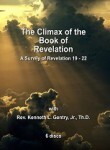
The Climax of the Book of Revelation (Rev 19-22)
Six lectures on six DVDs that introduce Revelation as a whole, then focuses on its glorious conclusion. Provides an important, lengthy Introduction to Revelation also.
See more study materials at: www.KennethGentry.com
Herman Bavinck, Reformed Dogmatics
The renewal of creation follows the final judgment. According to Scripture the present world will neither continue forever nor will it be destroyed and replaced by a totally new one. Instead it will be cleansed of sin and re-created, reborn, renewed, made whole. While the kingdom of God is first planted spiritually in human hearts, the future blessedness is not to be spiritualized. Biblical hope, rooted in incarnation and resurrection, is creational, this-wordly, visible, physical, bodily hope. The rebirth of human being is completed in the glorious rebirth of all creation, the new Jerusalem, who architect and builder is God himself.” (4:715)
“Following the final judgment comes the renewal of the world.” (4:715)
“Only such a renewal of the world, for that matter, accords with what Scripture teaches about redemption. For the latter is never a second, brand-new creation but a re-creation of the existing world. God’s honor consists precisely in the fact that he redeems and renews the same humanity, the same world, the same heaven, and the same earth that have been corrupted and polluted by sin…. Just as in the case of an individual human being, so at the end of time a rebirth of the world will take place as well…. This renewal of the visible world highlights the one-sidedness of the spiritualism that limits future blessedness to heaven…. The rebirth of humans is completed in the rebirth of creation.” (4:417)
Louis Berkhof, Systematic Theology
“THE NEW CREATION. The final state of believers will be preceded by the passing of the present world and the appearance of a new creation” (p. 736). “Scripture gives us reasons to believe that the righteous will not only inherit heaven, but the entire new creation” (p. 737).
John Murray, Collected Writings of John Murray (vol. 1)
“Too frequently the expectation that the Christian entertains is defective in this respect. It is the bliss of what he calls ‘heaven’ and may note partake of the definiteness that characterizes the biblical representation. Or his hope may be framed in terms of bliss that awaits the believer when he departs this life and goes to be with Christ in heaven. The bliss of the disembodied state for a child of God is not to be depreciated….
[But] “preoccupation with the disembodied state fails to have prime concern for the honour and glory of Christ. The final phase of his exaltation is waiting for his advent…. He has not yet judged the world and thus executed the final assize to which he is appointed (cf. Matt. 25:31–46; Acts 17:31).” (p. 87)
“Second, the fault mentioned fails to accord to the resurrection the place it occupies in the salvation of the just. The separation of body and spirit is evil, the result of sin. Hence the termination of this evil is integral to redemption. It is significant that the term redemption should be used to designate the resurrection of the body (cf. Luke 21:28; Rom. 8:23; 1 Cor. 1:30; Eph. 1:14). The hope of immortality in Scripture is not an abstract one, not one for the soul as distinct or in separation from the body, but the immortality that resurrection bestows when this corruptible will put on incorruption and this mortal will put on immortality, and death will be swallowed up in victory (cf. 1 Cor. 15: 53, 54). It is then that mortality will be swallowed up of life (cf. Rom. 8:11). This paramount interest of the believer in the consummation of redemption is waiting for Christ’s advent. For then the dead will be raised and the living changed (cf. 1 Cor. 15:52).” (p. 88)
“A third feature related to the consummatory nature of the advent is the deliverance of the creation ‘from the bondage of corruption into the liberty of the glory of the children of God’ (Rom.8:21). The redemption wrought by Christ is of cosmic proportions; it extends to the material creation. Redemption from sin includes deliverance from its curse. And since the curse extended to the creation (cf. Gen. 3:17; Rom. 8:20), the completeness of redemption involves the removal of creation’s curse. This is a necessary ingredient of the believer’s hope and exemplifies again the concreteness of this hope. The focus of hope is the bodily return of the Lord, a return that brings with it the redemption of the body. It is a resurrection hope. The final abode is not one unrelated to the creation, but the renovated creation without the least trace of sin’s curse. In Peter’s word: ‘Nevertheless we, according to his promise, look for new heavens and a new earth, wherein dwelleth righteousness’ (2 Pet. 3:13).” (p. 95)
John M. Frame, Salvation Belongs to the Lord
“Scripture speaks of this new reality as a ‘new heavens and a new earth’…. It is a physical reality, appropriate to our resurrected bodies… Remember, the consummation of human existence does not take us above and beyond the physical. Rather, as with Jesus’ resurrection body, our existence in the new heavens and earth will be physical.” (p. 292)
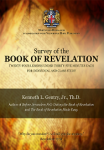
Survey of the Book of Revelation
(DVDs by Ken Gentry) Twenty-four careful, down-to-earth lectures provide a basic introduction to and survey of the entire Book of Revelation. Professionally produced lectures of 30-35 minutes length.
See more study materials at: www.KennethGentry.com
Wayne Grudem, Systematic Theology
“The Physical Creation Will Be Renewed and We Will Continue to Exist and Act in It. In addition to a renewed heaven, God will make a ‘new earth’…. Several passages indicate that the physical creation will be renewed in a significant way…. Will earth simply be renewed, or will it be completely destroyed and replaced by another earth…? Reformed scholar have tended to emphasize that verses that say simply that this present creation will be renewed. The Reformed position seems preferable here, for it is difficult to think that God would entirely annihilate his original creation, thereby seeming to give the devil the last word and scrapping the creation what was originally ‘very good.’” (p. 1160)
“In the new heavens and new earth, there will be a place and activities for our resurrection bodies, which will never grow old or become weak or ill…. Therefore we can expect that in the new heavens and new earth there will be a fully perfect earth that is once again ‘very good.’ And we can expect that we will have physical bodies that will once again be ‘very good’ in God’s sight, and that will function to fulfill the purposes for which he originally placed man on earth.” (p. 1161)
Benjamin L. Gladd and Matthew S. Harmon, Making All Things New.
“There are still aspects of many en-time prophecies that have not yet been fulfilled but will be when Christ returns a second time, such as the bodily resurrection of all people, the destruction of the present cosmos, the creation of a completely new heaven and earth, the final judgment, the eternal Sabbath, and so on.” (p. 13)
Charles Hodge, Systematic Theology
“There are to be new heavens and a new earth, just as we are to have new bodies. Our bodies are not to be annihilated, but changed.” (3:852) “The earth was cursed for his transgression. That curse is to be removed when man’s redemption is completed. The ktisis that was made subject to vanity for man’s sin, is our earth; and our earth is the ktisis which is to be delivered from the bondage of corruption. This change to be effected is in the dwelling-place of man…. This earth, according to the common opinion, that is, this renovated earth, is to be the final seat of Christ’s kingdom.” (3:852–54)
R. J. Rushdoony, Systematic Theology
“The full restoration of our physical life awaits the end of the world. Our physical existence is a part of God’s creation of the universe, and the restoration of our perfect bodily life awaits the restoration of the whole creation at the end of history. The present order shall be melted, burned, and recast into its perfect and final form…., at which time the resurrection of our bodies will also take place. In the beginning, God creation a world which was entirely good as man’s habitat …. In the new creation, a like act occurs. The world and all creation are remade to be eternally good, to be the habitation of life, and man is given the resurrection body to be a citizen of the new creation.
“To deprecate the body is to misunderstand the faith. The body as a key place in eschatology, because God works for the redemption and regeneration of all creation. Our end-point eschatology thus calls for the care of the body as God’s handiwork, and as a temple of the Holy Spirit, and as God’ property….” (2:847–48)
Cornelis P. Venema, The Promise of the Future
“The whole creation, heaven and earth, will undergo by the Triune God’s working, a process of renewal and transformation. Through this process the creation will be wholly sanctified, cleansed of every stain and remainder of sin.” (p. 460)
“Just as the resurrected body represents the transformation of the present body of the believer, so the new creation represents the transformation, not the annihilation, of the present creation.” (p. 461)
“Considering the substantial continuity between the present and new creation, it follows that the life to come in the new creation will be as rich and full of activity in the service of the Lord as was intended at the beginning.” (p. 469)
Sam Storms, Kingdom Come
“I believe that promise [of the land] will be literally fulfilled, but not merely (or even primarily) in the land of Canaan…. The ultimate fulfillment co8uld only be realized on the New Earth.” (p. 208)
Anthony Hoekema, The Bible and the Future
“In this chapter we shall deal with the final state of those who are in Christ. The Bible teaches that believers will go to heaven when they die. That they will be happy during the intermediate state between death and resurrection is clearly taught in Scripture. But their happiness will be provisional and incomplete. For the completion of their happiness they await the resurrection of the body and the new earth which God will create as the culmination of his redemptive world….
The doctrine of the new earth, as taught in Scripture, is an important one…. One gets the impression from certain hymns that glorified believers will spend eternity in some ethereal heaven somewhere off in space, far away from earth…. But does such a conception do justice to biblical eschatology?… On the contrary the Bible assures us that God will create a new earth on which we shall live to God’s praise in glorified, resurrected bodies…. To leave the new earth out of consideration when we think of the final state of believers is greatly to impoverish biblical teaching about the life to come.” (p. 274)
Francis Turretin, Institutes of Elenctic Theology
“From 2 Pet. 3:6, 10–12, quoted before, whence various arguments to prove the renovation of the world are drawn…. Thus a new heavens and a new earth shall be made…. Now these things imply a change and not an annihilation…. From Rom. 8:19 and the following verses, the renovation of the world is collected in many ways.” (3:591)
“Now as all corporeal deliverances have been types of spiritual, temporal of eternal, the Holy Spirit refers these words to the renewing of the world … which will follow at the end of time…. Nor yet is an annihilation of the former world indicated, but only its change.” (p. 593).
“So here they are said to be new heavens and a new earth not absolutely and simply, but relatively, as to the new and purged stated of the world.” (p. 594)
Geerhardus Vos, Reformed Dogmatics
“What will precede the consummate salvation of the children of God? The appearance of a new world. Scripture speaks of that very clearly. In Acts 3:21 Peter speaks of an apokatastasis, a ‘restoration of all things.’ And in Revelation 21:5 He who sits on the throne says: ‘Behold, I make all things new.’ As a matter of fact, all this is inherent in the relationship to the rest of creation in which man stands. It is given to him so that he would rule over it. It has been carried along with him in his fall. It has been subjected to the groaning of futility. It is in travail, since with the dawning of the glory of the children of God it also awaits its liberation (Rom. 8:19–22)….
“Scripture teaches further that this new world will follow the glorification of the children of God, that is, the glorious resurrection and the last judgment.
“How are we to think of this bringing into being of the new world? Thinking on this question differs greatly. Some propose an absolutely new world, so that in substance the old does not recur in the new and a new world comes in its place. The Lutheran dogmaticians until Gerhard were devoted to this view. But in general whenever they mention the new earth as a matter of form, they do not say much about it. The Reformed, for the most part, expressed support for the opposite view, namely that the substance of the presently existing world will be preserved but will be restored, purified in glory.” (pp. 1152–53)
G. C. Berkouwer, The Return of Christ
“The discussion of the resurrection from the dead leads us directly to a consideration of the ‘new earth.’ The link between these two aspects of the eschatological promise is the fact that the resurrectio carnis [resurrection of the flesh] talks about a future for the body. This body is not an abstract, spiritual existence having nothing to do with the earth, but something that has a place and a manifold function in the earth.” (p. 211)
Berkouwer’s entire fifth chapter is on “The New Earth” (pp. 170–210) which follows his chapter on “The Resurrection” (pp. 211–234).
Robert Letham, Systematic Theology
“The renewed earth [is] the proper location of our embodied existence. The resurrection of the body should ensure that we do not understand it [our eternal existence] in a docetic, spiritual, nonmaterial sense.” (p. 900)
David Bauer, The Gospel of the Son of God
“Matthew’s portrayal of the future state emphasizes embodied existence. Thus Jesus speaks of the ‘whole body’ being thrown into hell (Mt 5:29–30), and he describes persons being thrown into the fire with two hands, two feet, two eyes, or, conversely of ‘entering life’ maimed, lame, or with one eye (Mt 18:8–9). His disciples should fear only the one who can ‘destroy both soul and body in hell’ (Mt 10:28), the ‘soul’ (psuche) referring to one’s essential being (cf. Mt 11:29; 16:25–26; 26:38).
Like the rest of the New Testament, the Gospel of Matthew does not think in terms of disembodied immorality but rather envisions resurrection (Mt 22:23–33). Yet resurrection existence will involve an altered state, since Jesus describes the resurrected ones as being ‘like the angels in heaven,’ in the sense that earthly human needs and desires, and even present human relationships, will be transcended (Mt 22:34). When Matthew describes the future condition of the righteous (‘they will shine like the sun,’ Mt 13:43) in much the same terms as his description of Jesus on the Mount of Transfiguration (‘his face shown like the sun,’ Mt 17:2), which foreshadows Jesus’ resurrection. Matthew suggests that Jesus’ resurrection body is a prototype of theirs (cf. Phil 3:21; 1 Cor 15:20–23)” (p. 304)
“Matthew does not conceive of the age to come as a nonworldly, ethereal existence (he never speaks, e.g., of ‘going to heaven’), but rather as taking place in a restored or regenerated creation (Mt 19:28, paliggenesia)…. The passing away of heaven and earth apparently refers not to the annihilation of the earth but to the destruction of the cosmos as we know it, with the corollary of a restored, or reconstituted earth.” (p. 306)
I conclude: thus, the view our eternal destiny is in the new earth. And this is not an innovative position. It is not “Gentry’s view.” It is the view of historic orthodoxy, particularly Reformed orthodoxy. I believe it will be helpful to close with a penetrating question from J. Richard Middleton:
J. Richard Middleton, A New Heaven and a New Earth
“At this point the reader might be sensing a significant tension between the Bible’s holistic vision of the redemption of earthly creation and the way that many, if not most, Christians think about the future of the earth. How did it come about that so many in the church today seem unaware of God’s intent to redeem this world? How did the idea of an otherworldly destiny in heaven displace the biblical teaching of the renewal of the earth and end up dominating Christian eschatology?” (p. 293)
Conclusion
This is to name but a few. Orthodoxy is more widespread that Hyperpreterists realize. Gnosticism is not the order of the day within evangelical and Reformed theology. Unfortunately, Hyperpreterists operate on the Pharisaic principle pointed out by Christ: “Woe to you, scribes and Pharisees, hypocrites, because you travel around on sea and land to make one proselyte” (Matt. 23:15).
Note
I actually talk while I am typing, so I am being quite literal. My wife finds this quite annoying and wishes I would quit it. Especially since I don’t speak in a normal tone, but actually yodel the words. But try as I might, all I could do was quit moving my lips while I yodel the words aloud. Unfortunately, I could not properly throw my voice (not being a trained ventriloquist, having learned my meager skills through a surprise package in a Wheaties box). Clever woman that she is, she traced down the source of the noise that kept her awake at night. Then promptly whacked me over the head with an iron skillet that she had bought for just such occasions. But I am a problem solver: I now get off the computer by 2:00 am and am even considering moving it off the end our bed.If anyone complains that I should not have ended this sentence with a preposition, then let it be known that this is the kind of errant pedantry up with which I will not put!There is no third footnote. You can go back to work now.March 12, 2024
THE REVELATION OF WHOM?
 PMW 2024-020 by Kenneth L. Gentry, Jr.
PMW 2024-020 by Kenneth L. Gentry, Jr.
The opening words in Revelation declare that it is a revelation of Jesus Christ (1:1a).
The fuller representation of Jesus’ name as “Jesus Christ” occurs only in Rev’s first five verses (1:1, 3, 5; both names are mentioned in 20:4 but not together). The name “Jesus” appears alone nine times (1:9 [2x]; 12:17; 14:12; 17:6; 19:10 [2x]; 22:16, 20). “Lord Jesus” is mentioned two times in the conclusion (22:20–21). He is referred to simply as “Lord” twice (11:8; 14:13).
Though Paul frequently uses “Jesus Christ” (Ro 1:4, 6–8; 1Co 1:1–3; 2Co 1:2–3; Gal 1:1; Eph 1:1–3; Php 1:11; Col 1:1, 3; 1Th 1:1; 2Th 2:1–2; 1Ti 1:16; 2Ti 2:8; Tit 1:1; etc.), as does Luke in Acts (Ac 2:28; 3:6; 4:10; 8:12, 37; 9:34; 10:36, 48; 11:17; 15:26; 16:18; 20:21; 28:31), it occurs only rarely in the Gospels: three times in Matthew (1:1, 18; 16:21 [in two early mss]), once in Mark (1:1), and none in Luke. John uses this double name only twice in his Gospel, once in the opening (1:17) and later he records it as Jesus’ self-reference in his high priestly prayer (17:3). But he uses it more frequently in his first epistle which has a strong emphasis on the incarnation (1Jn 1:3; 2:1; 3:23; 4:2; 5:6, 20; 2Jn 7).
Mounce (40; cp. Smalley 34) suggests that this fuller name “is appropriate in the elevated style of the prologue” and Boxall (23) notes that this fuller name “gives the book its incontestable authority.” That John refers to him simply as “Jesus” ten times (1:9 [2x]; 12:17; 14:12; 17:6; 19:10 [2x]; 20:4; 22:16; 22:20) is due to his focusing on his incarnational name of salvation: “Jesus” means “Jehovah saves” (cp. Mt 1:21). His theme regards Christ’s death which was made possible by his earthly incarnation (1:5, 7; 5:9; 7:14; 12:11; 19:13).
THE APOCALYPSE OF JOHN
by Milton S. Terry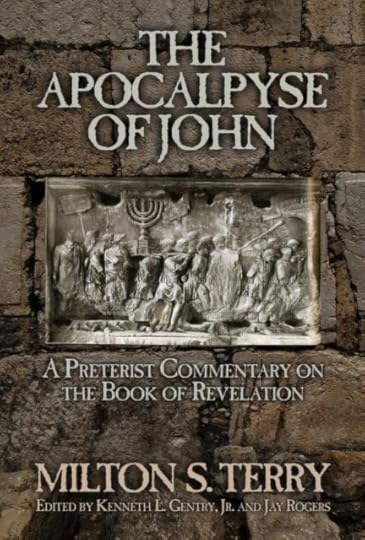
This book is Terry’s preterist commentary on the Book of Revelation. It was originally the last half of his much larger work, Biblical Apocalyptics. It is deeply-exegetical, tightly-argued, and clearly-presented.
For more study materials: https://www.kennethgentry.com/
“Jesus Christ” occurs in the genitive form Iēsou Christou. This could be an objective genitive signifying “a revelation about Jesus Christ” (i.e., he is the subject of the revelation), as per Lücke (cf. Bleek 141), Hort (4), Hughes (15), Ford (373), and Corsini (71). Though most probably it is a subjective genitive meaning “a revelation from Jesus Christ” (i.e., he is the source of the revelation), as per the majority of scholars (e.g., Stuart 1:2; Bleek 141; Terry 275; Milligan 1901, 2; Düsterdieck 32, 95; Mounce 40; Beale 183; Witherington 67; Smalley 27; Osborne 52; Boxall 23).
Though the objective genitive could well fit the theme and drama of Rev, where the Slain Lamb is the central personality, this must be subjective for the following reasons: (1) Immediately after this statement we read: “which God gave Him.” Surely this does not mean that this is a revelation about Jesus Christ which God gave to Jesus. (2) The contextual flow is emphasizing the chain of revelation from God to Christ to his angel to John. In John’s Gospel Jesus declares that he teaches only what he hears from the Father (Jn 8:26–29, 40; 12:49; 14:10; 15:15; 17:8). (3) In his conclusion John records Christ’s statement that he “sent My angel to testify to you these things” (22:16, 20), i.e., the things in revelation are ultimately from Jesus. He is “the first Mediator who received, as it were, the revelation originally proceeding from the Father, to communicate it to the seer, and through him to other believers” (Bleek 141). (4) As I argue in my Introduction John appears to be under the direct control of Christ’s interpretation and application of the OT. This fits perfectly with the subjective genitive understanding.
[image error]For more information and to order click here.
God Gave Wine (by Ken Gentry)
A biblical defense of moderate alcohol consumption. Considers all key biblical passages and engages the leading objections.
See more study materials at: www.KennethGentry.com
This opening statement sets the tone for the rest of the book. Jesus’ revelation to John is especially concerned to present Jesus’ message to the seven churches (2:1, 8, 12, 18; 3:1, 7, 14) which is intended by him to minister to all other “churches” (2:7, 11, 17, 23, 29; 3:6, 13, 22). In light of Rev’s theme as stated in 1:7 (cp. Mt 24:30; Mk 13:26; Lk 21:27), this appears especially to be concerned with his message as delivered in the Olivet Discourse (Mt 24; Mk 13; Lk 21) the subject of which is also mentioned elsewhere (e.g., Mt 8:10–12; 21:12–13, 18–22, 33–45; 22:1–14; 23:31–38).
March 8, 2024
OBJECTIONS TO THE LABEL “OPTIMISTIC AMILLENNIALIST”
 PMW 2024-019 by Kenneth L. Gentry, Jr.
PMW 2024-019 by Kenneth L. Gentry, Jr.
A Reader Writes:
Dr. Gentry:
Good afternoon, sir. I recently read an article by you in which you referred to the label “optimistic amill.” as an oxymoron. Could you please tell me why you think that? I’d be very thankful. I am currently working through these eschatological issues and any help you could give me would be much appreciated.
KC, Cleveland, OH
My Reply:
Thanks for your question. My comments are based on two factors:
Historically amillennialism has tended to be pessimistic in terms of the question of widespread, long-lasting cultural success for the Christian faith. That is, regarding these:
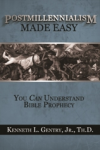
Postmillennialism Made Easy (by Ken Gentry)
Basic introduction to postmillennialism. Presents the essence of the postmillennial argument and answers the leading objections. And all in a succinct, introductory fashion.
See more study materials at: www.KennethGentry.com
1. As a system of gospel proclamation it teaches that the gospel of Christ will not exercise any majority influence in the world before Christ’s return;
2. As a system of historical understanding it, in fact, holds the Bible teaches there are prophetically determined, irresistible trends downward toward chaos in the outworking and development of history; and therefore:
3. As a system for the promotion of Christian discipleship it dissuades the Church from anticipating and laboring for wide-scale success in influencing the world for Christ during this age.
My debates with Strimple (Three Views on the Millennium), Gaffin (formal debate), and Fowler (in West. Theol. Jrnl.) confirm this to me.
It seems to me that the verses an amill would want to use in order to underscore his optimism are those that endorse a postmillennial perspective. Unless, of course, he is optimistic on grounds other than direct biblical revelation.
Please understand that my comment is not meant to be pejorative (as some frequently take it). I am simply highlighting the key difference between amillennialism and postmillennialism.
Hope this is helpful. May the Lord bless your present studies in eschatology.
 The Harrowing of Hell (by Jay Rogers)
The Harrowing of Hell (by Jay Rogers)
This postmillennial book examines the power of the Gospel, not only to overcome all opposition, but to rise far above the powers of hell. The term “Harrowing of Hell” refers to idea that Christ descended into Hell, as stated in the Apostles’ Creed.
For more Christian educational materials: www.KennethGentry.com
March 5, 2024
DOMITIAN’S PERSECUTION OF CHRISTIANS?
 PMW 2024-018 by Mark Wilson
PMW 2024-018 by Mark Wilson
Was Roman emperor Domitian really the great persecutor of Christians?
As I revisited a critical biography of the Roman emperor Domitian by the scholar Brian W. Jones recently,1 I was reminded that “alternative facts” and “fake news” are not just a contemporary phenomenon. On occasion ancient writers similarly tried to spin their version of the truth. Jones tackles the familiar line that Domitian, who reigned between 81 and 96 C.E., was a great persecutor of Christians. This “fact” is now standard stock in much popular writing on the book of Revelation and is even found in some scholarly tomes. In his discussion, Jones carefully rehearses how this “fact” developed.
Eusebius in his Church History (CH) provides the first reference to Domitian persecuting the church. Writing over three centuries later in the early fourth century C.E., this ancient Christian historian first quotes Melito of Sardis, who mentioned that Domitian brought slanderous accusations against Christians (CH 4.26.9). He also cites Tertullian, who claimed that Domitian was cruel like the emperor Nero (r. 54–68 C.E.), but that Domitian was more intelligent, so he ceased his cruelty and recalled the Christians he had exiled (CH 3.20.9). Eusebius also quotes Irenaeus, who claimed Domitian’s persecution consisted only of John’s banishment to Patmos and the exile of other Christians to the island of Pontia (CH 3.18.1, 5).
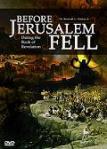
Before Jerusalem Fell Lecture
DVD by Ken Gentry
A summary of the evidence for Revelation’s early date. Helpful, succinct introduction to Revelation’s pre-AD 70 composition.
See more study materials at: www.KennethGentry.com
Despite these cautious statements by three earlier authors, Eusebius then spun his own alternative fact by claiming that Domitian, like Nero, had “stirred up persecution against us” (“anekinei diōgmon”; CH 3.17). From here the tradition was enlarged by Orosius (d. 420 C.E.), who, in his History Against the Pagans, wrote that Domitian issued edicts for a general and cruel persecution (7.10.5). Despite a lack of evidence, Jones observes that the tradition concerning Domitian’s persecution persists: “From a frail, almost non-existent basis, it gradually developed and grew large.”2 Thus the alternative facts sown by these ancient historians grew to a truism of Christian history.
No pagan writer of the time ever accused Domitian, as they had Nero, of persecuting Christians. Pliny, for example, served as a lawyer under Domitian and wrote in a letter to Trajan (r. 98–117 C.E.) that he was never present at the trial of a Christian (Letters 10.96.1). This is a strange claim for one of Domitian’s former officials if Christian persecution were so prevalent. The archaeologist Julian Bennett, who has written a biography of Trajan, also fails to mention any general persecution of Christians at this time. Domitian’s execution of Clemens has sometimes been linked to the senator’s apparent “atheism,” a term sometimes given to Christians. However, there is no “smoking gun” linking Clemens’s death to Christian persecution.3 So Jones concludes, “No convincing evidence exists for a Domitianic persecution of the Christians.”4 . . . .
Note: To finish the article and to see all the footnotes, please click HERE

As It Is Written: The Genesis Account Literal or Literary?
Book by Ken Gentry
Presents the exegetical evidence for Six-day Creation and against the Framework Hypothesis. Strong presentation and rebuttal to the Framework Hypothesis, while demonstrating and defending the Six-day Creation interpretation.
See more study materials at: www.KennethGentry.com
Mark Wilson is the director of the Asia Minor Research Center in Antalya, Turkey, and is a popular teacher on BAS Travel/Study tours. Mark received his doctorate in Biblical studies from the University of South Africa (Pretoria), where he serves as a research fellow in Biblical archaeology.
March 1, 2024
PRETERISM IN THE SCIENTIFIC ACADEMY?
 PMW 2024-017 by Kenneth L. Gentry, Jr.
PMW 2024-017 by Kenneth L. Gentry, Jr.
QUESTION TO ME
Hello, Mr. Gentry, good morning!
It is always a privilege to have the opportunity to interact with you via email.
I am currently studying preterism/postmillennialism through your writings and those of others (such as Douglas Wilson, Frank Brito, Sproul, Gary DeMar…). I would like to ask you a question, if you don’t mind:
Why do you think that those who embrace preterism/postmillennialism are a minority in academy, particularly among the Reformed? I was talking to a friend of mine who studied at Westminster (California), and he mentioned that he did not encounter any professors who advocated for this position…
Of course, the majority’s position does not determine its validity, but I find it curious that among the prominent contemporary scholars, the preterist view is in the minority (you certainly being an exception). Am I mistaken, or is this accurate?
I appreciate your attention and support in advance!
Fabrício Zamboni
The Beast of Revelation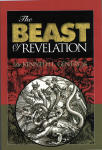
by Ken Gentry
A popularly written antidote to dispensational sensationalism and newspaper exegesis. Convincing biblical and historical evidence showing that the Beast was the Roman Emperor Nero Caesar, the first civil persecutor of the Church. The second half of the book shows Revelation’s date of writing, proving its composition as prior to the Fall of Jerusalem in A.D. 70. A thought-provoking treatment of a fascinating and confusing topic.
For more study materials, go to: KennethGentry.com
RESPONSE BY ME
Fabricio:
Thanks for your inquiry. Good question.
Preterism has clearly waxed and waned over the last 100 years, having been quite strong in the 1700–1800s. Fortunately, it is seeing a rebirth today. But unfortunately, it is being anathematized of late because of a small but noisy hyperpreterist movement, largely dependent upon the Internet and print-on-demand publishing. This movement has taken preterism and converted it into a whole new (unorthodox) theology, rather than seeing it as a helpful hermeneutic for certain passages. The recent adoption of some of its key unorthodox positions by ary DeMar has caused alarm for not a few evangelicals (including many of his friends), even prompting some to turn against preterism as dangerous. Dispensationalists have been particularly delighted in noting DeMar’s new convictions.
However, though orthodox preterism is a minority position, it is more widespread than you seem to realize. Your friend, in fact, is mistaken: there have been well-placed orthodox preterist evangelical scholars in Reformed seminaries, including at Westminster Theological Seminary. See:
Robert Letham, Systematic Theology (2019), who is Adjunct Professor of Systematic Theology at Westminster Theological Seminary (the very seminary you friend mentions). A Reformed seminary.
Keith Mathison, From Age to Age (2009) is Dean of the Ligonier Academy of Biblical and Theological Studies. A Reformed seminary.
 Prophecy Studies (4 downloadable mp3s)
Prophecy Studies (4 downloadable mp3s)
by Ken Gentry
Dispensationalism dominates the evangelical market regarding eschatological discussions. But dispensationalism is radically mistaken regarding the eschatology of Scripture. In this series not only is dispensationalism analyzed, but also the postmillennial eschatology of the Psalms, and a preterist analysis of Revelation.
See more study materials at: www.KennethGentry.com
Robert Reymond (recently deceased), A New Systematic Theology (1998) was Dean of Faculty at Knox Theological Seminary. A Reformed seminary.
R. C. Sproul (recently deceased), Matthew (An Expositional Commentary) (2019), taught at Knox Theological Seminary, and other Reformed seminaries.
Douglas Kelly, Revelation (Mentor Commentary) (2015), recently retired as Professor of Theology at Reformed Theological Seminary, Charlotte. A Reformed seminary.
See also these evangelical scholars who hold to key orthodox preterist positions:
David E. Garland, Luke (Zondervan Exegetical Commentary (2011), is Professor of Christian Scriptures at Baylor’s George W. Truett Theological Seminary.
R. T. France, Luke (Teach the Text Commentary Series) (2015), though recently deceased, France was Principal of Wycliffe Hall, Oxford University.
Jeffrey A. Gibbs, Matthew (Concorcia Commentary) (2010), is Professor of Exegetical Theology at Concordia Seminary. A Lutheran seminary.
Jeannine K. Brown, Matthew (Two Horizons New Testament Commentary) (2018), is Professor of New Testament at Bethel Seminary. A noted evangelical seminary.
Sam Storms, Thy Kingdom Come (2013), is President of Grace Training Center.
The quite recent dates for some of these major publications (see especially, France, Kelly, Letham, Storms, and Brown, for instance) show a current growing interest in orthodox preterism among evangelical scholars of repute.
If any readers can name some more contemporary evangelical, orthodox preterists in seminaries and colleges that I have overlooked, please send me their information.
I hope this is helpful and that your remain hopeful!
BEFORE JERUSALEM FELL
Doctoral dissertation defending a pre-AD 70 date for Revelation’s writing (459 pp; paperback). Thoroughly covers internal evidence from Revelation, external evidence from history, and objections to the early date by scholars.
For more study materials: https://www.kennethgentry.com/
February 27, 2024
DATE AND DURATION OF CHRIST’S INCARNATE STATE
 PMW 2024-016 by Thomas Ridgley (1667–1734)
PMW 2024-016 by Thomas Ridgley (1667–1734)
Gentry note:
This insightful article is taken from Thomas Ridgley, A Body of Divinity (1855). It provides some helpful arguments for the continuing incarnate existence of the resurrected Christ in heaven above. As such it contrasts with the new Gnosticism inherent in hyperpreterism, whereby Christ’s physically resurrected body is said to have dissipated once he ascended into heaven.
Not only so, but Ridgley gives us some insights into first century Judaism, which helps us see what confused the disciples in Matthew 24:3 when they equated the destruction of the temple with the close of the age and the end of history.
Ridgley argument:
Our Mediator is said to have been ‘incarnate, in the fulness of time;’ and it is added, ‘he shall continue to be God and man for ever.’
1. What is meant by Christ’s becoming man in the fullness of time?
The human nature could not be united to the divine from eternity; for it is inconsistent with its being a created nature, that it should exist from eternity. Yet he might, had it been so determined, have assumed this nature in the beginning of time, or immediately after the fall of man, who then stood in need of a mediator. But God, in his sovereign and wise providence, ordered it otherwise, and ordained that there should be a considerable distance of time between the fall of man, and Christ’s incarnation in order to his recovery. The period fixed on, is called in scripture, ‘the fulness of time’ (Gal. 4:4), that is, the time foretold by the prophets, and particularly Daniel (Dan. 9:24–25); whose prediction had an additional circumstance of time annexed to it, which gave occasion to the Jews to expect Christ’s coming at the actual time when he became incarnate.
Nourishment from the Word
(by Ken Gentry)
Reformed studies covering baptism, creation, creeds, tongues, God’s law, apologetics, and Revelation
See more study materials at: www.KennethGentry.com
That there was an universal expectation of the Messiah at this time, appears from the disposition of many among them to adhere to any one, especially if he pretended that he was a prophet, or that he would make some change in their civil affairs. The Jewish historian tells us of many tumults and seditions which were in that age. Some of their ringleaders he styles magicians. And though he does not expressly say that persons pretending to be prophets assumed the character of Messiah; yet he observes, that the time in which they appeared occasioned their being viewed as such. By this he means, that it being at that time that the Jews expected that the Messiah, their King, should come, they thought it a fit opportunity to make efforts to shake off the Roman yoke. And they were so far from concealing the expectation they had of this, that it was well known by the heathen, who were not without jealousies concerning them, with respect to this matter. Hence, some celebrated writers among the latter observe, that it was generally received throughout the East, according to some ancient predictions, that at that time the Jews should obtain the empire (Tacitus, Histories, bk. 5).
There are also several expressions, in scripture, which intimate as much. Thus Gamaliel speaks of one Theudas, ‘who boasted himself to be somebody,’ by which it is probable, he means the Messiah, ‘to whom a number of men, about four hundred, joined themselves, who was slain’ (Acts 5:36). This some think to be the same person whom Josephus mentions, the name being the same; though others are rather inclined to think that it was another pretender to this character, from some critical remarks they make on the circumstance of time referred to by Gamaliel being different from that which is mentioned by Josephus. This, however, does not affect our argument; for it is plain, from this instance, that about that time the Jews were disposed to join themselves to any one who endeavoured to persuade them that he was the Messiah.
This farther appears from the words of our Saviour, ‘All that ever came before me are thieves and robbers’ (John 10:8); by which, doubtless, he means several who pretended to be the Messiah, in the age before he came. It is said elsewhere, a little before our Saviour’s crucifixion, that ‘they,’ that is, the Jews generally, ‘thought that the kingdom of God,’ and consequently the Messiah whom they expected, ‘should immediately appear.’ Our Lord also foretells, that between that period and the destruction of Jerusalem, that is, before that age was at an end, ‘many false Christs should arise,’ and warns his followers not to adhere to them.
Moreover, had not the Jews expected that the Messiah would appear at that time, they would never have sent in so formal a manner, as they are said to have done, to inquire, whether John the Baptist, when he exercised his public ministry amongst them, was he. And when he had convinced them that he was not the Messiah, but that our Saviour would soon appear publicly amongst them, who had the only right to this character, he found it no difficult matter to persuade them to believe it. Accordingly, ‘Jerusalem, and all Judea,’ that is, the people almost universally, attended on his ministry, and ‘were baptized,’ making a profession of their faith in the coming of the Messiah, and of their expectation of him, and willingness to adhere to him.
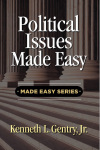 Political Issues Made Easy
Political Issues Made Easy
by Kenneth Gentry
Christian principles applied to practical political issues, including the importance of borders, the biblical warrant for “lesser-of-evils” voting, and more. A manual to help establish a fundamentally biblical approach to politics. Impressively thorough yet concise.
See more study materials at: www.KennethGentry.com
And it was the report which ‘the wise men who came from the east’ had received from the Jews who were conversant with them, that this was the time that the Messiah should appear, which brought them to Jerusalem from their respective countries; for without this, the preternatural meteor or star which they saw, could not have given them a sufficient intimation concerning this matter, so as to induce them to come and pay their homage to him. And when they came, and inquired of Herod, ‘Where is he that is born King of the Jews?’ how surprising soever it might be to that proud tyrant, to think that there was one born who, as he supposed, would stand in competition with him for the crown; yet it was no unexpected thing to the Sanhedrim, whose opinion in this matter he demanded, in an hypocritical manner. Hence, they said that he was to be born in Bethlehem, according to the prediction of the prophet Micah.
But if they had not known that this was the time in which he was to be born, they would have replied, that it was an unseasonable question, and a vain thing, to ask where a person was to be born whose birth was not expected in that age. They might also have easily satisfied Herod, and removed the foundation of his jealousy and trouble, and thereby have prevented the inhuman barbarity committed on the infants of Bethlehem, if they had told him that the time spoken of by the prophet Daniel, in which the Messiah was to be born, was not yet come. But they knew otherwise; and in this respect, Christ might be said to be born ‘in the fulness of time.’
We farther observe, that the coming of Christ was at that time when God had sufficiently tried the faith of the Old Testament church, in waiting for his coming, and thereby glorified his sovereignty, who hath the times and seasons of his bestowing all blessings in his own power.—Again, it was at that time when the measure of the iniquity of the world was abundantly filled, whereby his people might observe the deplorable state into which sin had brought mankind, and the utter impossibility of our recovery without a Mediator, and that the light of nature could not discover any method by which the redemption and salvation of man might be brought about.
Further, it was at that time when the Jewish church was at the lowest ebb. It was, therefore, the most seasonable time; and they were laid under the highest obligations to adore and magnify him. Their political state was broken, the sceptre had departed from Judah; and they were brought under the Roman yoke, which sat very uneasy upon them; nor could they ever expect to make that figure in the world which they once had done. Now, therefore, was the time for the Messiah to come, and erect his kingdom. Besides, they were given up to a very great degree of judicial blindness and hardness, and were disposed to make void the law of God by their traditions; so that religion among them was at a very low ebb. On this account, it was the fittest time for God to display his grace, in reviving his work, and preventing his cause and interest from wholly sinking in the world. This was the time in which the Son of God became Man.
[image error]For more information and to purchase click here.
" data-image-caption="" data-medium-file="https://postmillennialismtoday.files...." data-large-file="https://postmillennialismtoday.files...." class="alignright size-full wp-image-213" src="https://postmillennialismtoday.files...." alt="Predestination Made Easy" />Predestination Made Easy
(by Ken Gentry)
A thoroughly biblical, extremely practical, and impressively clear presentation of
the doctrine of absolute predestination.
See more study materials at: www.KennethGentry.com
2. Christ shall continue to be God and Man for ever.
The union of these two natures is indissoluble. As to his divine nature, he is necessarily eternal and unchangeable; and the human nature shall continue for ever united to it, as the result of the divine purpose, in which God intends that some ends glorious to himself, honourable to the Mediator, and advantageous to his people, should be attained thereby.
If Christ had had a design to lay aside his human nature, he would have done so when he had finished in it his work of obedience and sufferings, and had thereby so far answered the end of his incarnation that nothing more was necessary for the purchase of redemption. But when he rose from the dead, as a conqueror over death and hell, and was declared to have accomplished the work he came into the world to perform, it is certain he did not lay it aside, but ascended visibly into heaven, and shall come again, in a visible manner, in that same nature, to judge the world at the last day.
Again, the eternity of Christ’s human nature appears from the eternity of his mediatorial kingdom. Of this more shall be said under a following Answer, when we come to speak concerning the glory of Christ’s kingly office. It appears, also, from the eternity of his intercession, which, as the apostle states, ‘he ever liveth to make’ for his people (Heb. 7:25). This he does, by appearing in the human nature in the presence of God, in their behalf; so that he must for ever have a human nature.
Further, his saints shall abide for ever in heaven, and as the apostle says, ‘shall ever be with the Lord’ (1 Thess. 4:17). Their happiness shall continue, both as to soul and body. And, with respect to their bodies, it is said, they shall be ‘fashioned like unto Christ’s glorious body’ (Phil. 3:21). From these things it follows that his glorious body, or his human nature, shall continue for ever united to his divine Person.
Finally, his retaining his human nature for ever, seems necessary, as it redounds to the glory of God. It is an eternal monument of his love to mankind, and an eternal means to draw forth their love to him, who procured those mansions of glory, which they shall for ever be possessed of, by what he did and suffered for them in that nature.
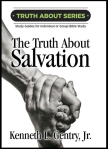 The Truth about Salvation By Ken Gentry
The Truth about Salvation By Ken Gentry
A study guide for personal or small group Bible study. Deals with the Christian doctrine of salvation from a Reformed theological perspective. It opens with a study of God as loving Creator, the shows how the first man fell into sin. Shows God’s righteousness requires that sin be dealt with. Presents Jesus as both God and man so that he can be man’s Savior. Includes review questions and questions for further study.Twelve chapters are ideal for one quarter of Sunday School.
See more study materials at: www.KennethGentry.com
Kenneth L. Gentry Jr.'s Blog
- Kenneth L. Gentry Jr.'s profile
- 85 followers



